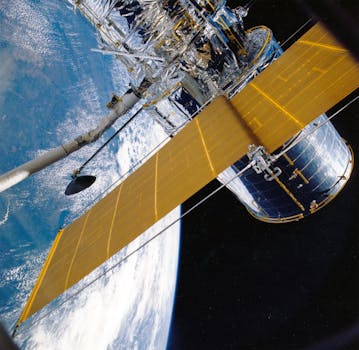GEO Satellites: Understanding the Technology and Applications of Geostationary Orbit Satellites
GEO satellites, or geostationary orbit satellites, are a type of satellite that orbits the Earth at an altitude of approximately 36,000 kilometers above the equator. At this altitude, the satellite’s orbital period matches the Earth’s rotational period, allowing it to remain stationary above a fixed point on the Earth’s surface. This unique characteristic makes GEO satellites an essential part of modern telecommunications, navigation, and weather forecasting.
GEO satellites have been in use for several decades, with the first geostationary satellite, Syncom 2, launched in 1963. Since then, the technology has evolved significantly, with modern GEO satellites offering a wide range of services, including television broadcasting, internet connectivity, and mobile communications. The focus keyword GEO satellites is used to describe the technology and applications of geostationary orbit satellites, which play a vital role in our daily lives.
How GEO Satellites Work
GEO satellites work by transmitting and receiving signals to and from Earth-based stations. The satellite’s antennas are designed to receive signals from a specific region on the Earth’s surface, which are then re-transmitted back to Earth, allowing for communication between two distant points. The satellite’s orbital position and altitude allow it to maintain a stable and continuous connection with the Earth-based stations, making it an ideal solution for applications that require a high level of availability and reliability.
The signals transmitted by GEO satellites can be used for a variety of purposes, including television broadcasting, internet connectivity, and mobile communications. The satellite’s high altitude and wide coverage area make it an ideal solution for broadcasting signals to a large audience, while its ability to transmit and receive signals in real-time makes it suitable for applications that require low latency, such as video conferencing and online gaming.
Applications of GEO Satellites
GEO satellites have a wide range of applications, including television broadcasting, internet connectivity, mobile communications, navigation, and weather forecasting. The use of GEO satellites for television broadcasting has revolutionized the way we watch TV, allowing us to receive channels from all over the world and enjoy high-quality programming. The use of GEO satellites for internet connectivity has also made it possible for people in remote areas to access the internet, bridging the digital divide and promoting economic growth.
The use of GEO satellites for mobile communications has enabled the widespread adoption of mobile phones, allowing people to stay connected with friends and family while on the move. The use of GEO satellites for navigation has also made it possible for us to determine our exact location and receive directions, making it easier to navigate unfamiliar territories. Finally, the use of GEO satellites for weather forecasting has enabled us to predict weather patterns and stay ahead of severe weather events, saving lives and reducing economic losses.
Challenges and Limitations of GEO Satellites
Despite the many benefits of GEO satellites, there are also several challenges and limitations associated with their use. One of the main challenges is the high cost of launching and maintaining a GEO satellite, which can be prohibitively expensive for many organizations. Additionally, the orbital position of GEO satellites can be affected by the gravitational pull of the Earth and the Moon, requiring periodic adjustments to maintain their position.
Another challenge associated with GEO satellites is the risk of signal interference, which can occur when two or more satellites transmit signals on the same frequency. This can result in a loss of signal quality and availability, making it essential to carefully plan and coordinate the use of GEO satellites to minimize the risk of interference. Finally, the use of GEO satellites also raises concerns about space debris and the environmental impact of launching and operating satellites in space.
Future of GEO Satellites
The future of GEO satellites looks promising, with several new technologies and innovations on the horizon. One of the most significant developments is the use of high-throughput satellites (HTS), which offer faster data speeds and greater connectivity. HTS satellites use a combination of advanced technologies, including spot beams and frequency reuse, to provide higher data speeds and greater connectivity.
Another area of innovation is the use of small satellites, which are smaller and less expensive than traditional GEO satellites. Small satellites offer several advantages, including lower launch costs and greater flexibility, making them ideal for applications such as earth observation and technology demonstration. Finally, the use of advanced propulsion systems, such as electric propulsion, is also being explored, which could significantly reduce the cost and increase the efficiency of launching and operating GEO satellites.


